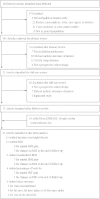Habitual Sleep Duration and Risk of Childhood Obesity: Systematic Review and Dose-response Meta-analysis of Prospective Cohort Studies
- PMID: 26537869
- PMCID: PMC4633618
- DOI: 10.1038/srep16160
Habitual Sleep Duration and Risk of Childhood Obesity: Systematic Review and Dose-response Meta-analysis of Prospective Cohort Studies
Abstract
A meta-analysis of cross-sectional studies found that shorter-time sleep was correlated with increased risk of obesity in children. However, findings from prospective cohort studies were inconsistent. PubMed and other data resources were searched through May 2015. Twenty-five eligible studies were identified including 56,584 children and adolescents with an average 3.4-year follow-up. Compared with children having the longest sleep duration (~12.2 hours), kids with the shortest sleep duration (~10.0 hours) were 76% more likely to be overweight/obese (pooled odds ratio [OR]: 1.76; 95% confidence interval [CI]: 1.39, 2.23); and had relatively larger annual BMI gain (pooled β coefficient: 0.13; 95% CI: 0.01, 0.25 kg/m(2)). With every 1 hour/day increment in sleep duration, the risk of overweight/obesity was reduced by 21% (OR: 0.79; 95% CI: 0.70, 0.89); and the annual BMI gain declined by 0.05 kg/m(2) (β = -0.05; 95% CI: -0.09, -0.01). The observed associations were not appreciably modified by region, baseline age or the length of follow-up. Accumulated literature indicates a modest inverse association between sleep duration and the risk of childhood overweight/obesity. Further research is needed to determine the age and gender specified optimal hours of sleep and ideal sleep pattern with respect to obesity prevention in children.
Figures



References
-
- Kahn S. E., Hull R. L. & Utzschneider K. M. Mechanisms linking obesity to insulin resistance and type 2 diabetes. Nature 444, 840–846 (2006). - PubMed
-
- Greenberg A. S. & McDaniel M. L. Identifying the links between obesity, insulin resistance and beta-cell function: potential role of adipocyte-derived cytokines in the pathogenesis of type 2 diabetes. Eur J Clin Invest 32 Suppl 3, 24–34 (2002). - PubMed
Publication types
MeSH terms
Grants and funding
LinkOut - more resources
Full Text Sources
Other Literature Sources
Medical

